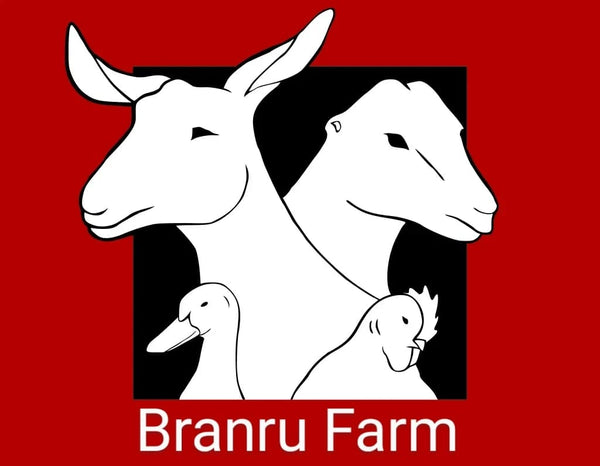One of the most important parts of life here at Branru Farm is keeping milk production up. That's because we make our own goat milk soap and goat milk lotion. Whether you want to drink goat milk or make goat milk soap or other products as we do, you need to start by getting at least one female goat of the breed of your choosing. Although, a pair is a much better plan because goats are herd animals and do not tend to do well alone. Then you need to know the basics of goat breeding and milk production, which are outlined below.
When Goats Produce Milk
Many people don't fully understand when goats produce milk or how much milk to expect. Well, we can't answer that last part here because there is a lot of variation between breeds and individual goats. Some goats produce next to no milk, and others can produce a gallon per day or more. Some also produce for months,
while others might continue producing milk for most or all of the year, but keep in mind you must milk them regularly. If you do not, milk production may stop or the goats may develop udder infections known as mastitis.
What we can tell you is that all female goats produce some amount of milk after kidding (having baby goats). The amount of milk produced changes as the kids grow. Production drops off as the kids are weaned. Therefore, there's no set consistent amount. Also, since milk is the food source for the kids, we only use a small portion of our herd's milk to make products like our lavender goat milk soap and sandalwood goat milk lotion when the kids are little. The rest is for the
babies to help them grow up healthy and strong. However, as they get bigger and transition to other foods like hay, we begin taking more milk for those purposes. Doing so helps keep milk production up longer.
Breeds and Average Milk Production Rates
All goats are individuals, but, like other animals, they do have certain breed-specific standards. Before you raise your own dairy goats, you need to select a breed you think works well for you. You should also base your herd size on your milk production needs. Those needs will be different if you just want goat milk for you and your family to drink versus if you want to make goat milk lotion or other products for sale. Larger goats typically produce more milk than smaller goats, so that can help you narrow down your breed options.
There is no way to know for sure how much milk you'll get after any kidding. However, breed averages do exist and can help you estimate. One good resource is this chart from the Pennsylvania State University. Use its recommendation as a guideline when deciding on the breed that might fit your needs best or just ask the farm owner that you buy your goat from. A reputable owner will know what their bloodlines are capable of producing.
What Ratio of Male to Female Goats Do You Need?
When it comes to goat husbandry, this question has a few different answers. It all depends on your needs, how much work you want to put into the process, what your intentions are, and how much space you have.
Standard options are these:
Keep zero bucks yourself but rent the services of a buck from a local farmer to help you impregnate your does.
Keep one buck, which is all you need for up to 20 females or so. Some experts even say you can breed as many as 30 females to one buck. However, this option is not recommended because a lone buck has to be isolated when breeding time is over and may get depressed.
Keep at least two bucks. This is best if you want to keep any of the kids and then breed them later. That way you can avoid inbreeding initially. Although, you will need to purchase or rent the services of more bucks later to continue preventing inbreeding long-term.
Keep a buck and a wether (the term for a castrated male goat). Wethers are typically cheaper to purchase than breeding bucks, and a wether can be a companion for your sole buck for a while when you're just starting out and on a budget.
Regardless of which goat husbandry option you choose, having a way to separate bucks from does is vital. Bucks have strong scents that can contaminate the milk when they are let in with producing does or allowed to even get close to where they are kept. Keeping bucks several hundreds of feet away from does when they are not in the act of breeding is necessary. It's even better if they have completely separate pens on different parts of your property. On the other hand, if you keep one or more wethers they do not have those strong odors that can contaminate the milk, so you can opt to let them in with the does.
An example of a good time to do that would be if you start with a buck and a wether and then later purchase a second buck. A wether can act as a goat reproduction alarm of sorts when put in with the does. It can alert you when females are in heat. That can help you make your goat breeding more efficient so you can either increase milk production and/or grow your herd, as desired.

